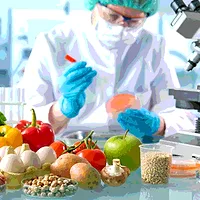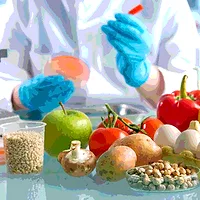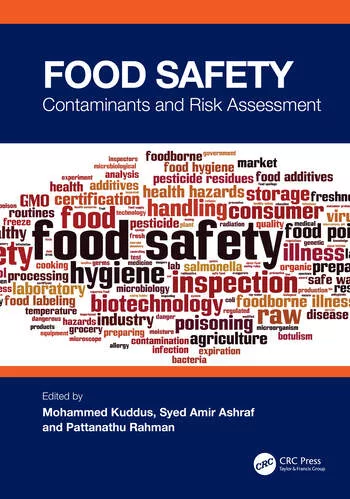Staying ALERT about Food Defense

Food defense is a term used to describe activities associated with protecting the nation’s food supply from intentional contamination. The U.S. Food and Drug Administration (FDA) has adopted three broad strategies that encompass its food defense activities:
• Prevention. Increase awareness among federal, state, local, and tribal governments and the private sector of where the greatest vulnerabilities lie and develop effective protection strategies to shield the food supply from intentional contamination.
• Response. Develop the capacity for a rapid, coordinated response to a foodborne terrorist attack.
• Recovery. Develop the capacity for a rapid, coordinated recovery from a foodborne terrorist attack.
Stakeholders must determine how to apply resources most effectively within this continuum of activities to best protect the food supply chain and consumers.
With regard to prevention, the FDA has employed two methodologies that help stakeholders optimize the use of their resources: a risk-based approach to food defense and integration of food safety and food defense.
Risk-Based Approach
The FDA has adopted a risk-based approach to determine where food defense resources are best applied. In the aftermath of 9/11, the Agency utilized an approach known as Operational Risk Management (ORM). ORM involves a determination of which combinations of foods and agents, and which locations on the farm-to-table continuum, constitute the highest risk of being targeted for attack that may result in a large number of casualties. FDA recognizes that any food could potentially be contaminated and thus zero-risk foods do not exist. However, based on ORM analysis, higher-risk foods do share several common vulnerability factors:
• Large batch size, which implies a large number of servings
• Short shelf-life, which implies rapid turnaround at retail and rapid consumption
• Uniform mixing, which would maximize the number of people exposed to an agent
• Accessibility of a critical node; i.e., a process or activity in the farm-to-table chain during which the agent could be added, undetected, in effective quantities
Following the ORM approach described above, a second-generation vulnerability assessment tool called CARVER + Shock came into use. CARVER is an acronym for the following factors by which it assesses the vulnerability of a potential food/agent combination as a target for terrorism:
• Criticality (public health and economic impacts)
• Accessibility (physical access to the targeted food)
• Recuperability (ability of the affected system/population to recover from the attack)
• Vulnerability (ease of accomplishing the attack)
• Effect (losses directly attributable to attack)
• Recognizability (ease of identifying a target)
An additional measure called “Shock,” which combines the physical, psychological and economic effects, is also evaluated. This method generates a relative ranking of the production steps that have been assessed and therefore allows a far more detailed assessment of the farm-to-table continuum than is possible with ORM.
Another benefit of the CARVER + Shock vulnerability assessments is the ability to gain insight into research needs. Following the conduct of vulnerability assessments with industry on a variety of foods regulated by the FDA, a number of research questions were generated. The research questions fell into general categories including:
• Thermal stability of chemical and microbiological agents
• Stability of chemical and microbiological agents to acidic and alkaline pH
• Effectiveness of disinfection agents against chemical and biological agents
• Filtration to eliminate or reduce chemical and biological agents
Research results have been summarized and posted on the CFSAN website at www.cfsan.fda.gov/fooddefense. Research efforts continue as the current assessments generate new questions.
Currently, there is a joint program led by FDA, the U.S. Department of Agriculture (USDA), the Federal Bureau of Investigations (FBI), and the Department of Homeland Security (DHS) in collaboration with private industry and the states known as the Strategic Partnership Program Agroterrorism (SPPA) Initiative. The SPPA was launched in July 2005. Under it, industry and state volunteers conduct vulnerability assessments locally in different states on a variety of food commodities in coordination with federal partners. These assessments not only address a specific food commodity but also facilitate interactions between and among the federal, state, and local officials that would be involved in a response to a deliberate attack on the food supply.
In July 2006, the SPAA released a report summarizing the results from the first year of SPPA Assessments. Seventeen CARVER + Shock assessments have been conducted through the SPPA program to date. Examples of some highlighted FDA-regulated commodities include produce, yogurt, infant formula, apple juice and bottled water. The report demonstrates trends seen in processing and agriculturally based commodities and also discusses potential mitigation strategies and research gaps that were identified. The report is posted at the CFSAN food defense website.
The next generation of CARVER + Shock assessments is underway, as well. Whether the CARVER + Shock assessment is conducted in person or with the assistance of software, the goal is the same: to target the expenditure of resources by identifying the most critical, vulnerable points in food production. The FDA is working on developing a computer-based tool to assist industry in conducting CARVER + Shock assessments. Version 1 of the software is intended for manufacturers and processors in the food industry with future modules targeting farms, retail businesses and foodservice establishments. The tool is designed to be easy to use and will generate results similar to the face-to face CARVER + Shock methodology. Added benefits include the ability to customize and analyze vulnerabilities based on individual facilities, as well as requiring less time and resources for analysis. The CARVER + Shock software is expected to be released by early 2007 and will be available through the FDA, free of charge.
Integration of Food Safety and Food Defense
As we continue to move forward in meeting our food defense goals by increasing preparedness, developing response plans, and ensuring that we have the tools to facilitate recovery, we must also integrate these approaches into our existing food safety infrastructure. The overlap between food safety (concerning unintentional contamination) and food defense (concerning intentional contamination) is extensive, and the pool of resources available is often the same; for example, the same foods in the same farms, manufacturers, warehouses, retail outlets, etc., the same set of inspectors at the local, state and federal level and in some instances even the same agents.
Food safety and food defense are ongoing issues and it is critical that they be integrated to the maximum extent possible in order to ensure the most efficient use of resources as well as optimizing response to a contamination event. FDA is committed to this approach in order to make optimal use of both human and financial resources to protect public health. As a result, FDA field forces may weave components of food defense awareness and education into food safety inspections. The FDA encourages other stakeholders to consider the possibilities of incorporating food defense ideas into their food safety related programs.
The ALERT Initiative. The need to integrate food safety and food defense led to the development of tools to assist regulatory stakeholders, such as federal, state and local inspectors, with the task of raising food defense awareness in industry. The effort began with the development of FDA Food Security Guidance documents written for specific segments of the food industry. After sharing these documents with industry since 2003, it became clear that a shorter message that would spark thought and discussion around food defense issues would be useful. That message is known as ALERT and has been captured on a wallet sized card (Figure 1).
What is ALERT? The ALERT message is designed to provide a concise and consistent approach to food defense awareness that is generic enough for use at any point in the food supply chain from farm to retail or foodservice establishment. It is a new initiative launched by the FDA in cooperation with the Centers for Disease Control and Prevention (CDC), the USDA, and state and local organizations representing food, public health, and agriculture interests. ALERT is an acronym that stands for Assure, Look, Employees, Reports and Threat. It is linked to five questions designed to raise awareness within the food sector with regard to important food defense issues such as product security and reporting of suspicious behavior.
ALERT Details. The ALERT Questions were developed using the previously mentioned FDA guidance documents to provide insight as to what issues industry might consider when thinking about food defense. These questions, along with some of FDA’s suggestions for consideration, provide a basis to help industry develop a continuous improvement program associated with these key food defense issues. The questions and a sample of the mitigation suggestions are described below. The local FDA District Office representatives or the CFSAN website, www.cfsan.fda.gov/alert, can provide a more detailed explanation.
As mentioned, the content for the ALERT initiative was developed through a federal-state partnership in consultation with a consortium of stakeholders. Federal representatives from the Department of Health and Human Services’ (HHS) FDA, CDC, USDA, and state and local representatives from the National Environmental Health Association (NEHA), the National Association of Local Boards of Health (NALBOH), the National Association of County and City Health Officers (NACCHO), the Association of State and Territorial Health Officers (ASTHO), the Association of Public Health Laboratories (APHL), the Association of American Feed Control Officials (AAFCO), the Association of Food and Drug Officials (AFDO), the United States Animal Health Association (USAHA) and the National Association of State Departments of Agriculture (NASDA) assisted with the development of this food defense awareness initiative.

ALERT initiative cards and supporting materials are being distributed through federal, state and local inspectors and other food industry liaisons. Instructions for ordering supplies directly can also be found online at www.cfsan.fda.gov/alert for details. Additional ALERT supplies, such as posters and brochures and other aids, will continue to be generated. A web-based training session is planned for release later this year, as well.
Next Steps
In today’s world, the nation’s awareness of terrorism has been heightened and the focus on protecting the nation’s food supply is greater than ever before. It is everyone’s responsibility to recognize food defense as an important issue and to get involved. Being aware of the threats, identifying the vulnerabilities, and taking action to reduce the risks are areas where federal, state, local, and private industry stakeholders must continue to work. The FDA, along with its stakeholder partners, will continue to share the ALERT message and build complimentary pieces to help raise food defense awareness. As the information available as a result of the SPPA program and the research and mitigation strategies continues to grow, the FDA will also work with stakeholders to convey the information effectively to areas where it matters most. We encourage all federal, state, local and private industry partners to consider ways that they can incorporate activities so that together, we ensure seamless integration of food defense across the food supply chain and enhance preparedness in the future.
Amy A. Barringer is a Food Defense Policy Analyst in the Office of Food Safety, Defense and Outreach at FDA’s CFSAN. Barringer previously served as the Biosafety Officer for CFSAN, after having held a similar position in USDA’s Agricultural Research Service. >







